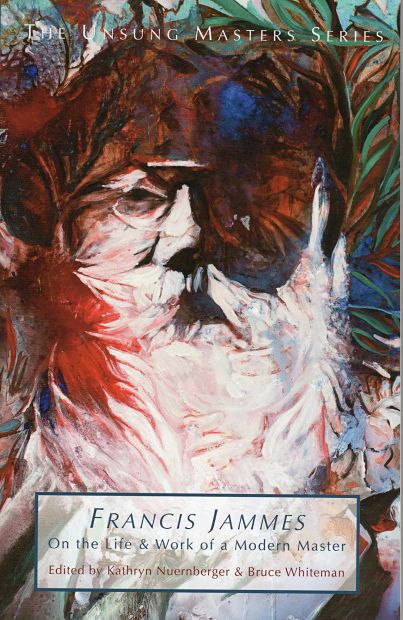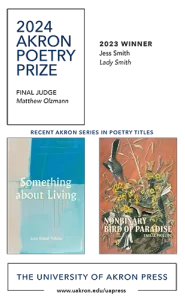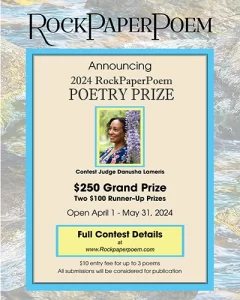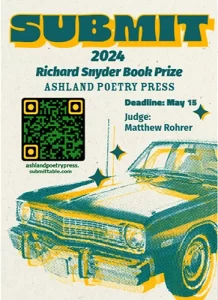Francis Jammes

On the Life & Work of a Modern Master
Kathryn Nuernberger, Bruce Whiteman
June 2014
Patrick James Dunagan
The Unsung Masters Series published by Pleiades Press performs a remarkable service to writers whose work has been eclipsed for one reason or another during the ensuing decades after its original appearance. Each volume focuses upon a writer relatively unknown, providing a relatively quick, yet nonetheless detailed, summation of his or her biography along with some critical overview and examples of the work itself. Francis Jammes (1868-1938) was a major presence in the French literary scene of his day. He also received significant attention from English readers. The Unsung Masters Series published by Pleiades Press performs a remarkable service to writers whose work has been eclipsed for one reason or another during the ensuing decades after its original appearance. Each volume focuses upon a writer relatively unknown, providing a relatively quick, yet nonetheless detailed, summation of his or her biography along with some critical overview and examples of the work itself. Francis Jammes (1868-1938) was a major presence in the French literary scene of his day. He also received significant attention from English readers. Yet his inclusion in the Unsung Masters Series is unfortunately necessary to bring him back into the contemporary discussion.
As Benjamin Johnson’s essay contribution “Francis Jammes and Anglo-American Modernism” takes note: “In the early decades of the twentieth century, Jammes ranked among the contemporary French poets most frequently read in English-speaking nations.” Jammes was championed by Imagist leaders Amy Lowell and Ezra Pound even as “World War I would make Jammes’ work seem less relevant to Modernist critics.” As Pound moved beyond Imagism in his own poetic development, parting from Jammes’ influence, so too Jammes fell out of relevance to a later audience due to subsequent unfolding of accepted taste and due preference given within the Modernist revolution.
In addition, Jammes made what has been seen as a conservative turn late in his life back to the Catholic faith. He also married, having returned from Paris to the Pyrenees in Southern France. Yet Kathryn Nuernberger’s essay “In Praise of Fauns” challenges this view. She counters the notion that “Jammes chose propriety over poetry.” While “it is the major explanation for Jammes’ position at the margin of the literary canon in the postmodern period” this represents “a flawed narrative that overlooks how much his highly regarded early work reflects a deep attachment to the Pays Bisasque” (i.e., the Pyrenees). Jammes’s “return to Catholicism” thus may also in part be seen as a reflection “of his commitment to and expression of solidarity with a marginalized homeland.” It is safe to assume that any future interest in Jammes will lie in viewing him as such a regional figure, reflecting the traditions and customs of his home region caught up in the midst of changing times. His writing clearly went through significant shifts in style, tone, and content, admirably altering in accord with the circumstances of his surroundings.
There’s also the impact of Jammes’ influence evident in work of “New York School” poets. While Frank O’Hara and John Ashbery receive some notice in the included commentaries, it’s surprising that later poets such as Ted Berrigan or Joseph Ceravolo do not. This volume would have benefitted by inclusion of an entire essay focusing on Jammes and poets of the “New York School.” Berrigan rather infamously offered to sell memberships to the “New York School” and the ironic stance he repeatedly strikes throughout interviews in regard to the notion that there is even any such “School” readily echoes the closing statement of Jammes in his “Jammisme: A Literary Manifesto”:
[. . .] since all is vanity, and even this statement is another vanity, it is the right thing in this century for everyone to establish a literary school. I ask everyone wishing to join mine, in lieu of founding another, to send their subscriptions to Saint Peter Street. Orthez, Lower Pyrenees.
It’s quite unfortunate that little to no in-depth comparison along these lines occurs in any of the essays.
Another major criticism of the volume concerns the absence of any Jammes’ texts presented in the original French. This is clearly distorting, especially when frequent reference is being made to the musical qualities of the writing. Including the original language would assist readers seeking to attain a better understanding of Jammes’ meter and rhythm, along with some insight into choices made by the numerous translators. Even those without a reading knowledge of French would benefit.
The lack of contextual framing for the samples of Jammes’ work which are included is yet another glaring fault. In the introduction, each of the editors recounts how they personally came to know of Jammes while never bothering to introduce the contents of the volume at hand. At the same time, none of the included essays speak directly to the samples of his writing in the collection. While individual included works are referenced at times, it is never in direct relation to one another, and some works not included are cited without sufficient contextualization. Jammes published works throughout his long life and it is trying for a reader to attempt assembling a chronology from the commentaries which are at once both overlapping and riddled by absences.
Nevertheless it is obvious that Jammes is well-deserving of further attention. This volume will hopefully spark interest for future scholarly projects with his work, which in turn will lead to further publications stably grounded by the necessary attention to details unfortunately not found here. Jammes may yet remain unsung to the full extent his work deserves, but this volume assures he’ll not be forgotten.




